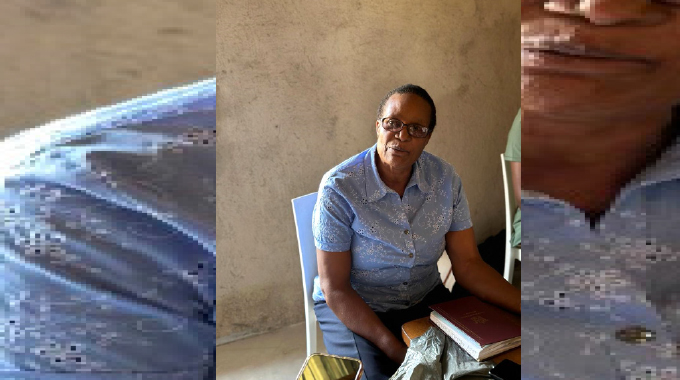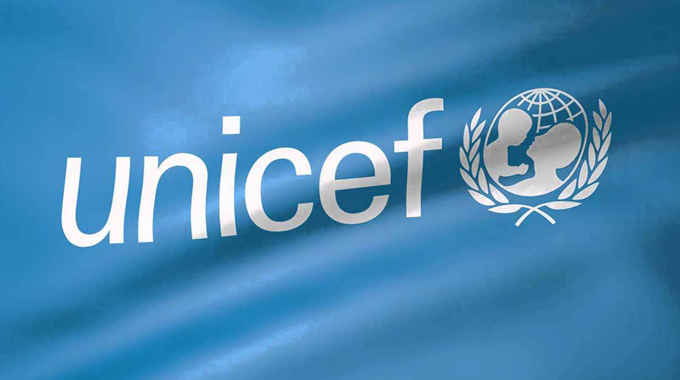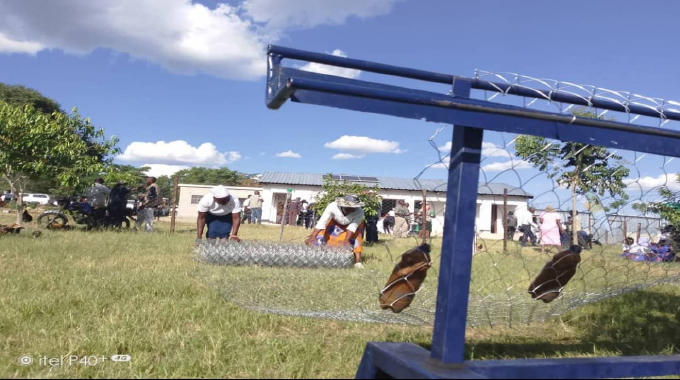Health Resilience Fund transforms Bulilima lives

Thandeka moyo-ndlovu, [email protected]
FOURTEEN years ago, a bright-eyed bubbly baby girl was born to a teenager from Bulilima, Nyele Village in Plumtree, Matabeleland South Province.
Like many of her peers, the mother of the baby headed to South Africa leaving her child in the care of her mother who is a peasant farmer, three months into breastfeeding.
As the girl grew up, she missed many vaccination dates and hospital visits because the nearest hospital was situated about 63km from their homestead.
The absence of a nearby clinic cast a shadow over the lives of villagers, leaving them vulnerable and at the mercy of fate.

The bundle of joy, Maria, would struggle to navigate her surroundings, often bumping into furniture and tripping over obstacles lying in her grandmother’s homestead.
Maria’s absent mother was notified of the concern but dismissed the communication as delays in milestones assuring her mother that all was well.
Eventually, it became evident that Maria had a visual impairment and after 13 years, she managed to get the correct diagnosis following a visit by specialists who had come for a medical outreach on glaucoma.
Glaucoma is a group of eye diseases that can cause vision loss and blindness by damaging a nerve in the back of the eye called the optic nerve.
The symptoms can start slowly such that you may not notice them. The only way to find out if you have glaucoma is to get a comprehensive dilated eye exam.
There is no cure (yet) for glaucoma, but if it’s caught early, one can preserve their vision and prevent vision loss, according to medical experts.
While others survived the unavailability of health centres in Bulilima, Maria will have to bear the brunt forever as her condition cannot be corrected due to delays in seeking health care.

Maria
Ideally, a girl her age should be doing Form Two but she is stuck in Grade Six at Tokwana Primary School and keeps repeating because there are no nearby schools that cater for learners with special needs in Bulilima.
Maria’s aunt, who has been her carer for the past six months, said the impact of not having a health centre nearby had far-reaching impacts even for future generations.
She said Maria may fail to live up to her full potential due to delays that have cost her precious sense of sight.
“She was born with a visual impairment but delays in seeking healthcare further complicated the situation as nothing can be done now to correct her vision.
We don’t have a hospital nearby and unfortunately, Maria was left with her grandfather as a baby who is old and unable to be seek health care services.
Her mother went to South Africa and is rarely home which makes it difficult as the elderly man can’t walk long distances or afford bus fare to health institutions,” she said.
“What makes her situation dire is that she has been doing Grade 6 for the past three years as she can’t be assessed due to her disability. She goes to school with her peers but teachers can only do so much given the available resources.
We have tried seeking specialist services for her during medical outreaches and we were told that we were too late, her condition can’t be corrected now.”
According to the recent census results by the Zimbabwe National Statistical Agency, Bulilima District has a population of 85 600 and residents there rely on neighbouring districts for healthcare services.
Some are forced to travel more than 100km to access Plumtree District Hospital situated in Mangwe District.
Not all hope is lost however, for the Bulilima community, as the Government and its partners have been rolling out quarterly health outreaches to ensure villagers have access to quality healthcare from the comfort of their homes through the Health Resilience Fund (HRF).
Doctors and nurses drawn from the Ministry of Health and Child Care and its partners are part of the programme to help ease the burden for the villagers as some are forced to walk more than 50km to the nearest health centre.

The Health Resilience Fund is a co-ordinated effort by the Government and development partners supporting the Ministry of Health and Child Care in attaining universal health coverage for all Zimbabweans.
It is a pooled fund led by the Ministry of Health and Child Care with financial contributions from the European Union, Gavi, and the Governments of Ireland and with technical support from UNFPA, Unicef and the World Health Organisation.
Programmes under the HRF are implemented through Government Ministries and aligned with the National Development Strategy 1.
Interventions of the fund which runs from 2022 to 2025 emphasise on increased availability, equity and access to essential services.
Investments in health systems and structures include innovations at the primary health care level and promoting community participation, long-term awareness and norm change.
One of the healthcare workers manning these outreach programmes, Ms Khupulo Ncube said the long-term solution would be building a district hospital.
“I’m based at Plumtree District Hospital and I rehabilitate those who were involved in accidents and stroke patients. We do home visits and assessments periodically.
We also offer treatments where necessary and when we’re at a point like this one, it’s easier for us to identify new clients like children with disabilities and some who would have never had any physical therapy before,” she said.
“We also sensitise the community on how they can live with people with disabilities, on how people with disabilities can benefit from health services and on how school children can be admitted to schools.”
She said many children like Maria need special schools and there are none in Bulilima.
“For children with visual impairment, we usually look for places like Jairos Jiri Centre. For those who might need something to help themselves or sustain them, we also turn to Jairos Jiri.
The demand is very high and the challenge is that with rehab, most of them need assistive devices, which we can’t get on our own. We have to look for donors or be assisted by the Government.”
Ms Ncube said there is a high number of children in need of assistive devices.
“For those who might be at home, the demand is high because most of them stay with their grandparents who can’t afford to walk long distances to clinics or spend money on transport to health facilities.
“Maria is a classic example of what happens when one delays seeking medical attention and unfortunately her condition has no cure.
The least we can do is get her a place at Jairos Jiri so that she can learn Braille and develop self-sustaining skills otherwise there’s no hope for her in this village which doesn’t have a single facility for children with special needs.”










Comments